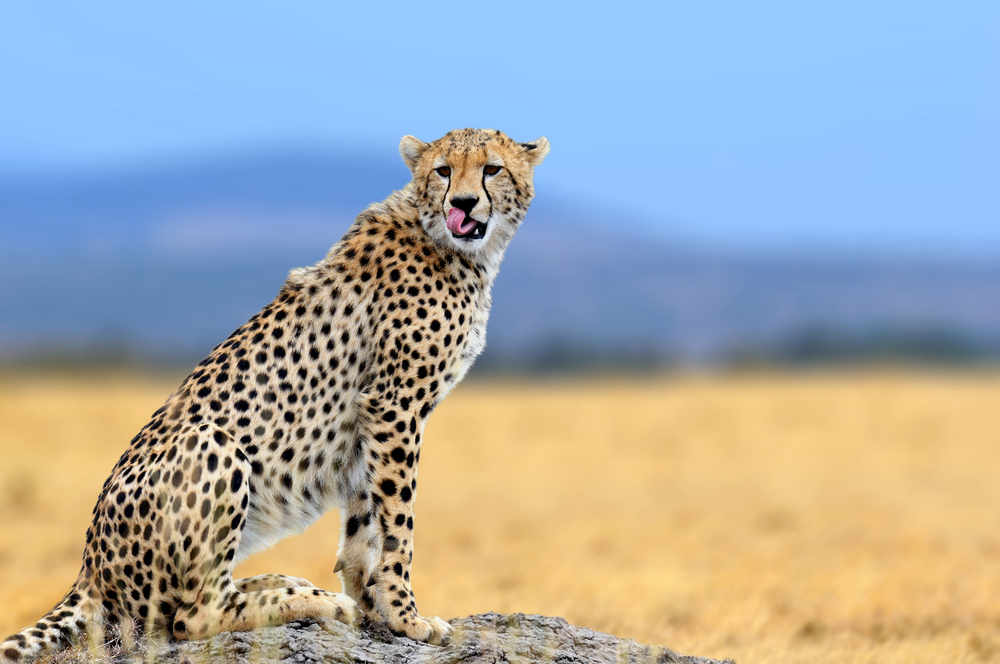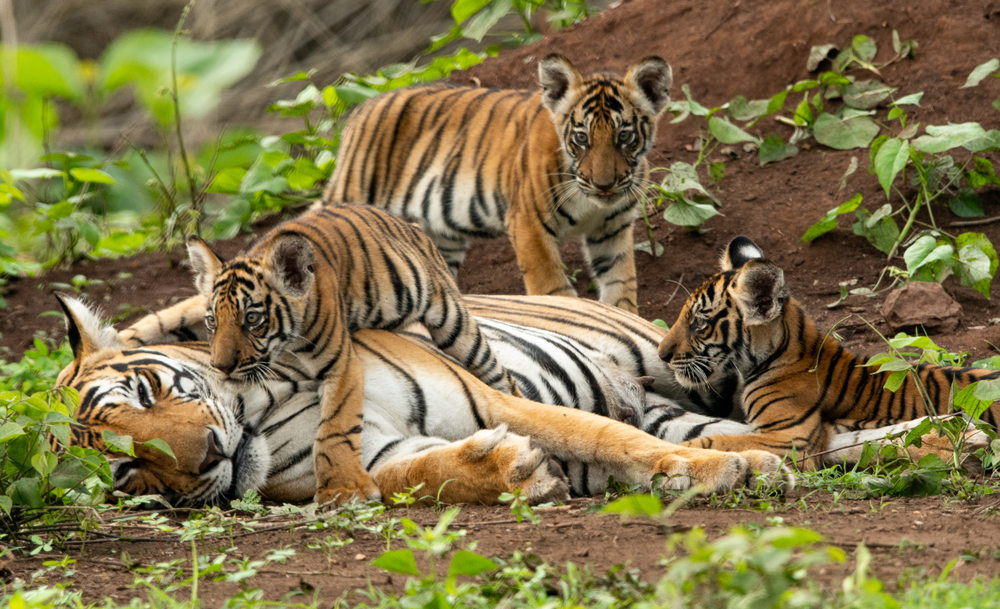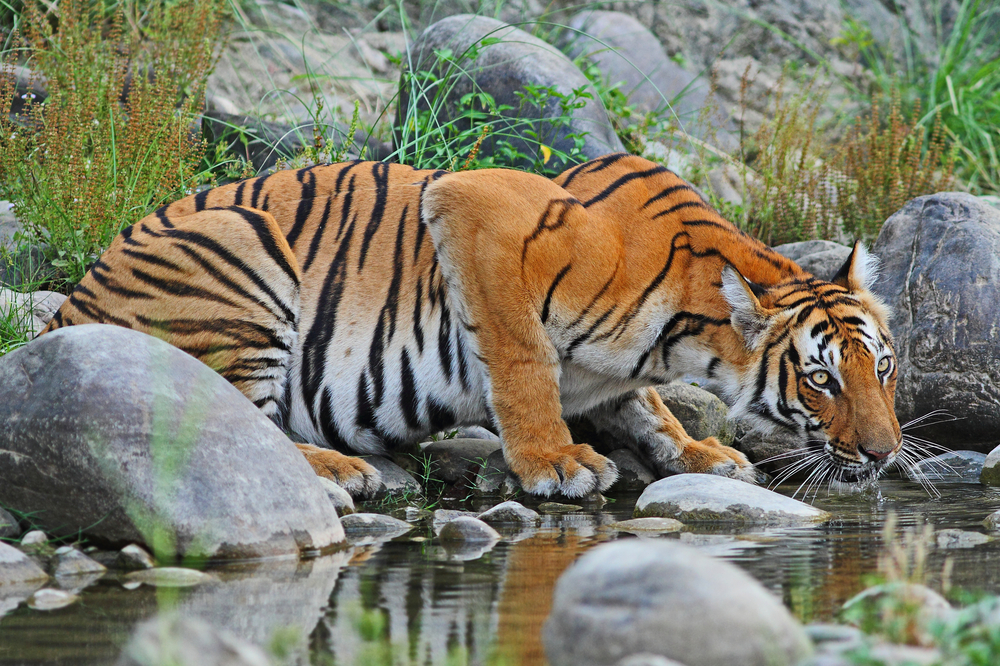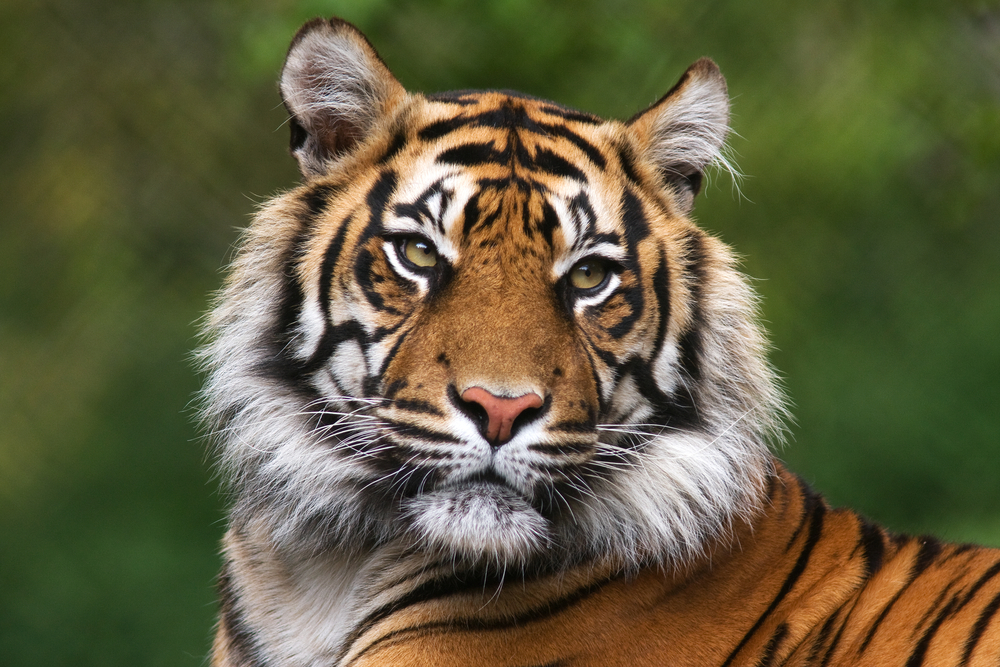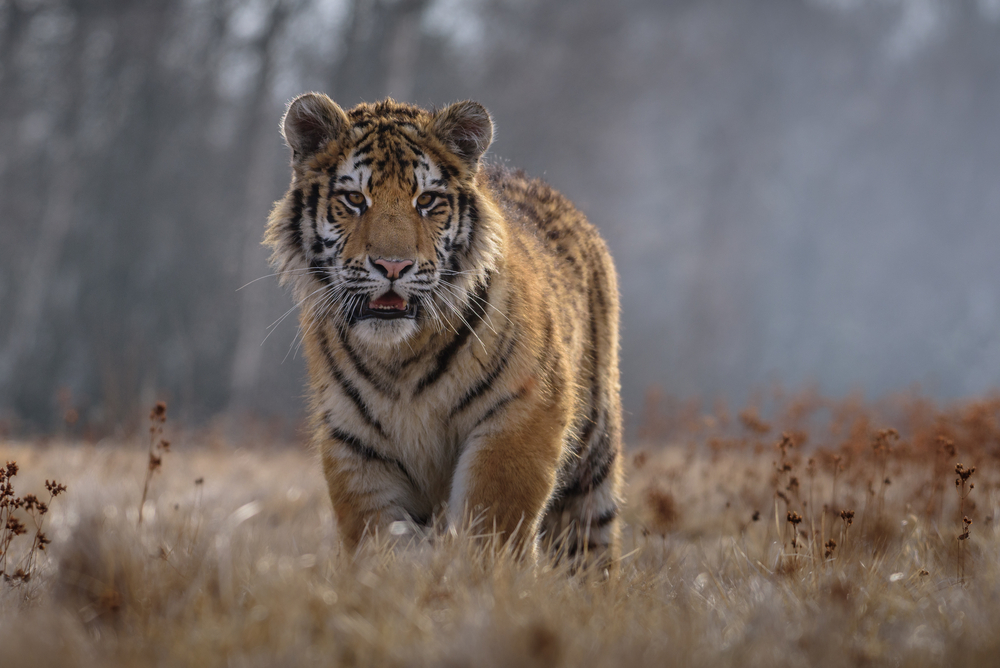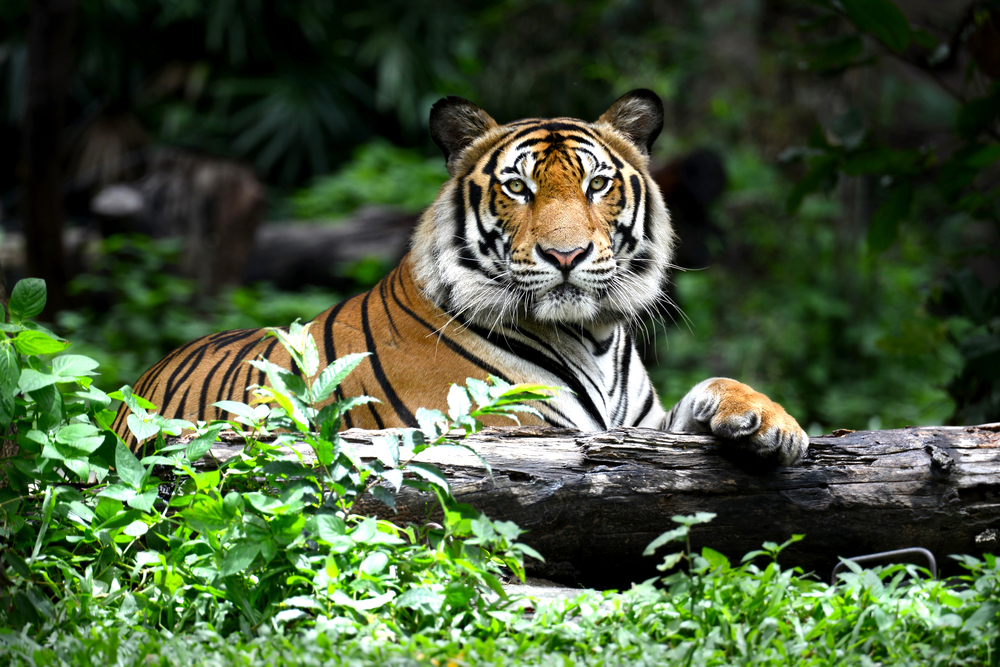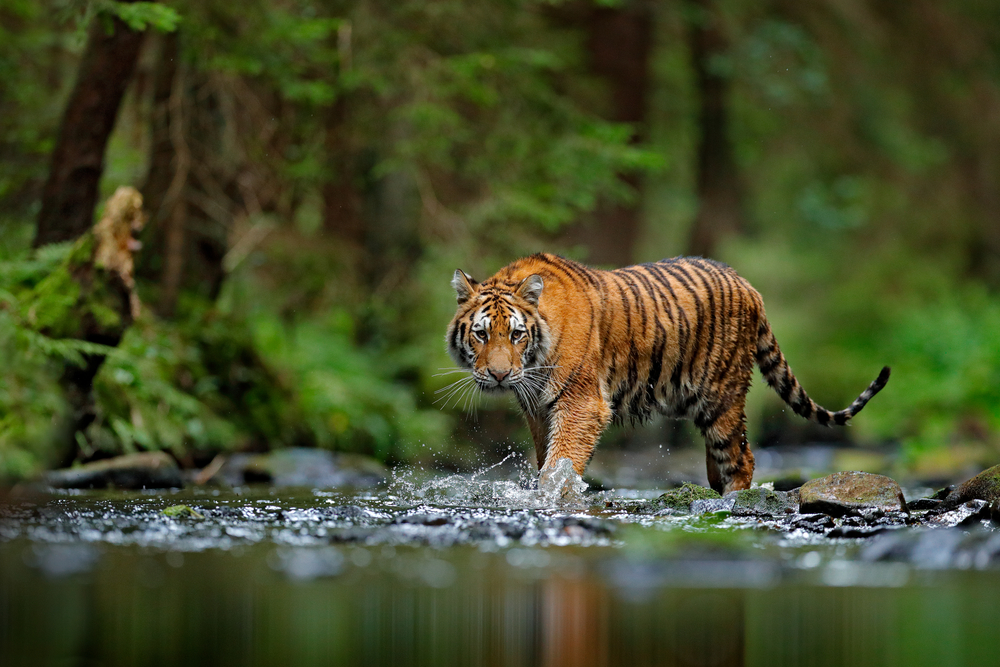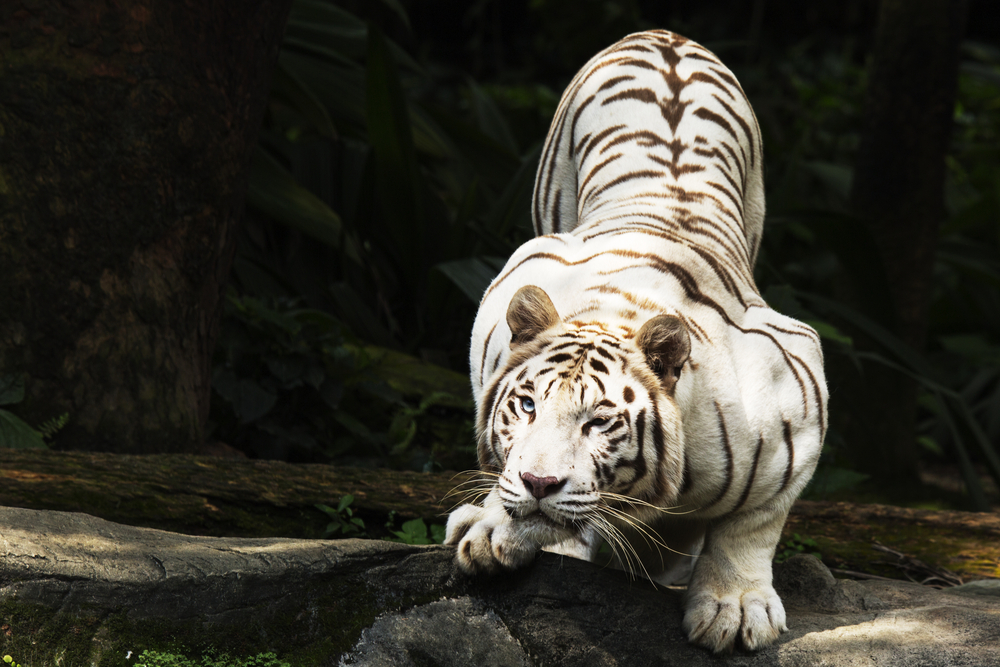Reproduction
The reproductive cycle of the tiger, a majestic and iconic big cat species, encompasses several key stages:
Sexual Maturity: Tigers reach sexual maturity between 3 to 4 years of age. However, this can vary depending on factors such as gender, environmental conditions, and population density.
Courtship and Mating: During the mating season, which typically occurs throughout the year in tropical climates and during specific periods in temperate regions, male tigers actively seek out receptive females. Males mark their territories with scent markings and vocalizations to attract females. Courtship behaviors include mutual grooming, rubbing, and vocalizations between mating pairs.
Mating Behavior: Once a receptive female is located, mating occurs through copulation. The male mounts the female from behind and copulation can last for several minutes to several days, ensuring successful fertilization.
Gestation Period: After mating, the female undergoes a gestation period of approximately 3.5 to 4 months (around 100 days). During this time, the fertilized eggs develop into embryos within the female’s uterus.
Birth and Maternal Care: Tiger cubs are usually born in litters of 2 to 4 cubs, although litter sizes can vary. The mother gives birth in a secluded den or dense vegetation to protect the vulnerable cubs from predators. Cubs are born blind and helpless, relying entirely on their mother for warmth, protection, and nourishment.
Maternal Nursing and Weaning: The mother nurses her cubs with milk rich in nutrients for the first few months of their lives. As the cubs grow, they gradually transition to solid food through regurgitation and hunting lessons provided by the mother. Cubs are weaned at around 6 to 8 weeks but may continue to nurse intermittently until they are around 6 to 8 months old.
Juvenile Development and Independence: Tiger cubs remain under the care and protection of their mother for approximately 1.5 to 2 years, during which time they learn essential survival skills such as hunting, territory marking, and social behaviors. Around the age of 2, tiger cubs become independent and disperse to establish their territories.
Reproductive Cycle and Reproductive Success: Female tigers typically breed every 2 to 3 years, depending on the availability of resources and the survival of previous litters. Male tigers, on the other hand, may mate with multiple females within their territories during each breeding season, contributing to genetic diversity within tiger populations.
Understanding the reproductive cycle of tigers is crucial for conservation efforts aimed at protecting this endangered species and its dwindling habitats. Conservation measures may include habitat preservation, anti-poaching efforts, community-based conservation initiatives, and captive breeding programs to ensure the long-term survival of these magnificent big cats.








































































